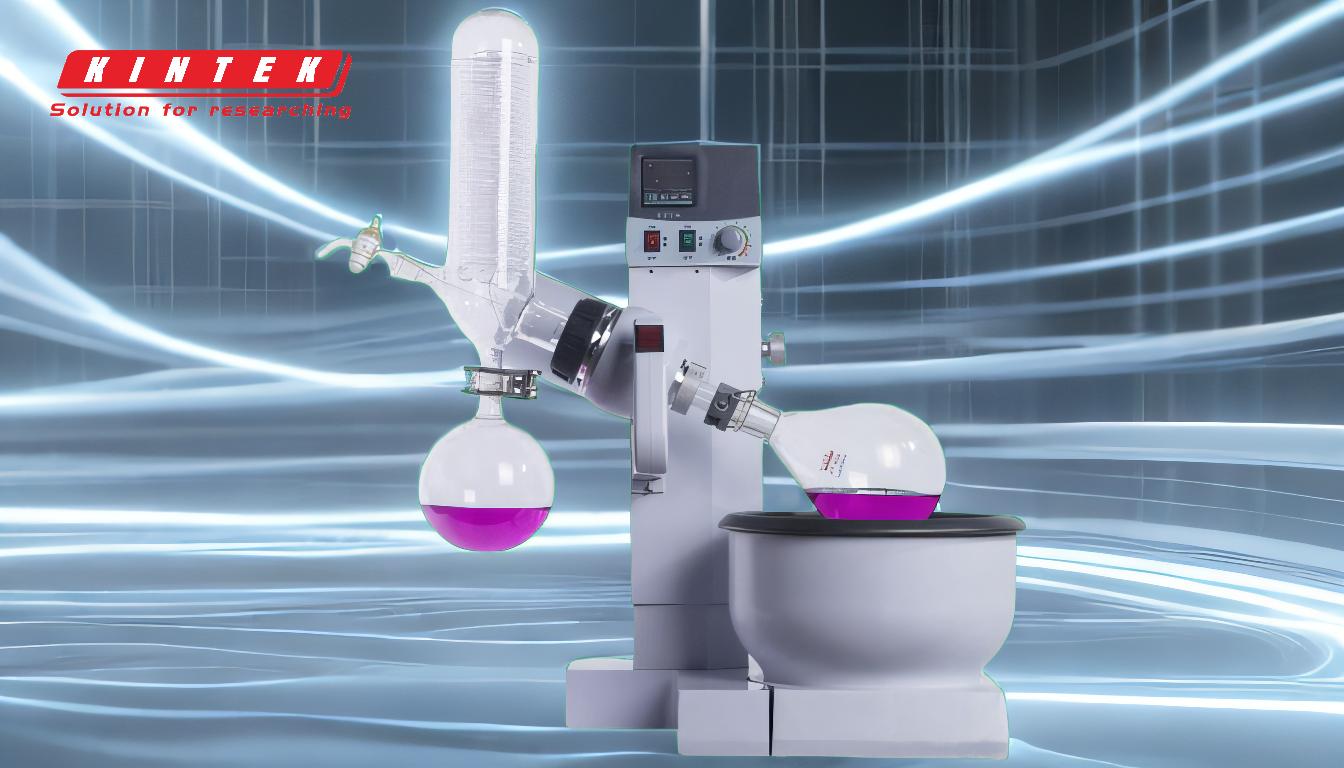The optimal temperature for ethanol rotary evaporation (rotovap) depends on balancing efficiency and safety. The recommended ethanol vapor temperature is typically 15–20°C, as this range prevents solvent loss and ensures efficient recovery. To achieve this, the water bath temperature is usually set about 20°C higher than the desired vapor temperature, around 35–40°C. Additionally, the condenser temperature should be set lower, ideally around 0°C, to ensure proper condensation of ethanol vapor. These settings help minimize bumping and maximize solvent recovery while maintaining safe operating conditions.
Key Points Explained:

1. Recommended Ethanol Vapor Temperature
- The ideal vapor temperature for ethanol during rotary evaporation is 15–20°C.
- This range ensures efficient solvent recovery while minimizing the risk of bumping or solvent loss.
- Lower temperatures reduce the likelihood of bumping but may slow down the process slightly.
2. Water Bath Temperature
- The water bath temperature should be set about 20°C higher than the desired vapor temperature.
- For ethanol, this means a water bath temperature of 35–40°C.
- This temperature difference ensures sufficient heat transfer to the ethanol without overheating or causing rapid boiling.
3. Condenser Temperature
- The condenser temperature should be set lower than the vapor temperature to ensure proper condensation.
- For ethanol, the condenser is typically set to around 0°C.
- A cold condenser ensures that ethanol vapor is effectively condensed and collected, preventing loss.
4. Pressure Considerations
- The boiling point of ethanol decreases with reduced pressure.
- At 30°C, ethanol boils at 123 mbar.
- At 25°C, ethanol boils at 95 mbar.
- Adjusting the pressure (vacuum level) allows for lower boiling temperatures, which is critical for heat-sensitive compounds.
5. 20/40/60 Rule
- This rule provides a guideline for setting temperatures in rotary evaporation:
- 20°C higher than the vapor temperature for the water bath.
- 20°C lower than the vapor temperature for the condenser.
- For ethanol, this translates to:
- Water bath: ~35–40°C.
- Condenser: ~0°C.
6. Practical Tips for Ethanol Rotary Evaporation
- Use a manometer to monitor pressure and ensure it aligns with the desired boiling point.
- Refer to a distillation nomograph to determine the relationship between temperature and pressure for ethanol.
- Avoid setting the water bath temperature too high, as this can lead to bumping or solvent loss.
- Ensure the chiller is functioning properly to maintain the condenser at the desired low temperature.
By following these guidelines, you can optimize the rotary evaporation process for ethanol, ensuring efficient recovery and safe operation.
Summary Table:
| Parameter | Recommended Temperature | Purpose |
|---|---|---|
| Ethanol Vapor | 15–20°C | Ensures efficient recovery and minimizes bumping or solvent loss. |
| Water Bath | 35–40°C | Provides sufficient heat transfer without overheating the ethanol. |
| Condenser | ~0°C | Ensures effective condensation of ethanol vapor, preventing loss. |
| Pressure | Adjustable (e.g., 95–123 mbar) | Lowers boiling point for heat-sensitive compounds. |
Optimize your rotary evaporation process—contact our experts today for personalized guidance!












